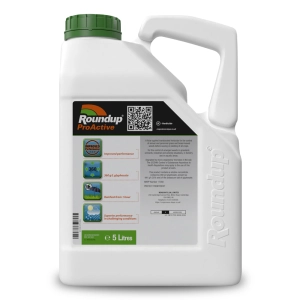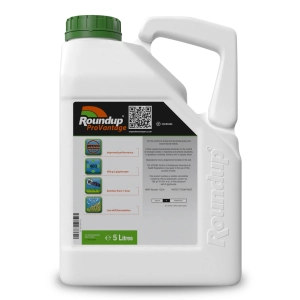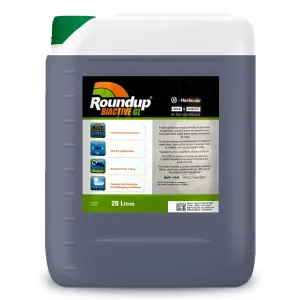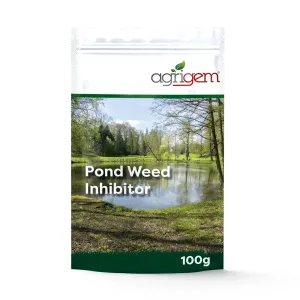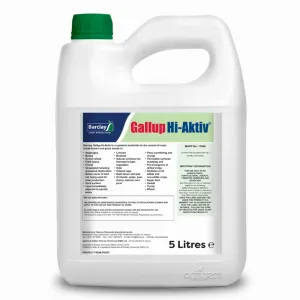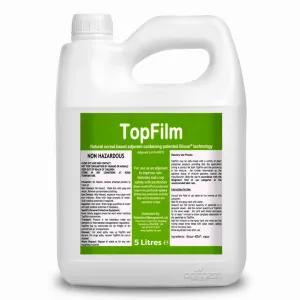The term ‘aquatic weed control’ relates to the control of weeds that are in water. However, rules also apply to the control of weeds near water, so anyone wanting to use herbicide (or insecticide and fungicide) in these areas, must apply for permission to use it from the Environment Agency.
This rule applies in every case, including the treatment of weeds near, or in water on private land. It also includes weeds on the margin of a lake, river or pond.
You can find the application form and guidance notes here. Note that before you complete this application, you will need to know which product(s) you intend to use. Continue to read on for specific product information.
These rules are enforced by the Department of Environment, Food and Rural Affairs (DEFRA) and fall under the Food and Environment Protection Act 1985, and the Pesticides Regulations 1986.
Always consult the product label and usage instructions before using these products and ensure the user is appropriately trained, certified, and skilled in the process of application. Please note that there are no amateur-use pesticides that have approval for use on open or enclosed waters, or on land immediately adjacent to aquatic areas.
Find out more about the safe use of pesticides here.
The Environment Agency requires anyone approaching the issue of aquatic weed control to consider all non-chemical ways of removing weeds first.
However, if you cannot control the weeds without an herbicide, then you must ensure you select one with specific approval for aquatic weed control.
Weeds In Open or Enclosed Water
Roundup Pro Active, Roundup Pro Vantage, and Roundup Biactive GL all have approval for use in open and enclosed waters. We also stock weed inhibitors (not herbicides) including Pond Weed Inhibitor and Clear Water Pro,
The Roundup products all contain the active ingredient glyphosate, and they will only work on weeds where the weed leaf is dry and above the water.
When used in accordance with instructions, these products pose little risk to the environment, humans or wildlife, and indeed can be used in water than contains fish and other wildlife. Any fish, reptiles, mammals in the water will not be affected by the glyphosate as they do not have the same enzyme pathway as plants do.
Weeds On Land Immediately Adjacent to Aquatic Areas
Moving away from the waters’ edge, there is a small range of products available with approval for use on land immediately adjacent to aquatic areas.
These areas might include the bank of a lake, pond, river or stream, and include the area of land from where it slopes down to the water, and up to the water’s edge.
Roundup Pro Active, Roundup Pro Vantage, Roundup Biactive GL, together with Gallup Biograde 360 and Gallup Hi-Aktiv have approval for use in these areas.
Remember, you still need to apply to the Environment Agency for approval to use these herbicides in these areas.
Himalayan Balsam has been known to completely choke waterways
Weeds Further Away From Water
Appropriate products for specific weeds can be sprayed on areas further away from water if they have the correct approval for that situation.
If you are spraying using hand-held equipment, you can spray up to 1m away from the top of the bank as long as the nozzle is pointing away from the water.
When boom spraying, you need to consider buffer zones. These are directed by the label of the product being used, and the LERAP category of the product if it has one. Get in touch with our specialist technical team for further advice regarding LERAP categories.
Good To Know – Answers to Frequently Asked Questions About Aquatic Weed Control
Question
Can I use an adjuvant with my aquatic herbicide?
Answer
You could consider using an adjuvant like Top Film. This product is approved for use with aquatic herbicides and works by creating micro sponges that absorb and protect the herbicide, improving its performance.
Question
Why is there a hazard symbol on the product label if it is approved for use in water?
Answer
All herbicides can pose risks if not handled correctly. The hazard symbol acts as a warning against misuse, particularly in the case of applying the wrong concentration. This is why some of the glyphosate products have a clean label on a 5L product and not on the 20L one for example. The hazard symbol refers to the concentrated product, rather than once it has been diluted for use
Locked up with the hazard symbol are crucial safety points relating to PPE, product disposal, and spillage. Correct usage is vital, and we encourage all users to refer to the Code of Practice to ensure compliance with best practice when using any herbicides - including never filling a sprayer near a water course.
You can review the Code of Practice here.
Question
What sort of information do I have to give on the Environment Agency application?
Answer
You will need to provide personal contact information, and detailed information about the site where you propose to use herbicide. This includes Ordnance Survey grid references, and a site plan. You will also need to submit details of the person who will be applying the herbicide, the weeds you are treating, your proposed products, and how you will apply them.
Question
Will these approved products get rid of pond algae?
Answer
We stock a product called Clear Water Pro which is more effective against algae-related problems, but we would urge you to contact our technical team, preferably with images ready, in order to accurately identify the issue. Algae are not the same as weeds and can appear as a slimy green scum on the surface of water. Blanketweed, despite its name, is not a weed, it is algae and will need treating differently.
Question
What are the most common pond and lake weeds that I should be aware of?
Answer
Some of the most common UK pond weeds found in and around water include duckweed, Canadian pondweed (invasive), hornwort, bulrushes, watercress, waterlily, floating pennywort (invasive), New Zealand pygmy weed (invasive), curly waterweed (invasive), and Himalayan balsam (invasive).

Duckweed - one of the most common weeds found in UK ponds
Question
Why are weeds considered a problem? Some of them are quite attractive in water, could I consider leaving them?
Answer
Indeed, some water weeds can look attractive in water, but they should always be managed to ensure they do not take over or choke the waterway. Invasive margin weeds like Himalayan balsam are listed under the Countryside Act as a danger, meaning it is illegal to allow it grow in the wild. This particular plant does not require a lot of light or a specific habitat to grow, and it can spread rapidly, shading out native plants and leaving banks bare and susceptible to erosion in winter.
Unchecked weed growth can block waterway inlets and outlets and can significantly reduce the depth of watercourses which can impact the movement of boats and push out more diverse native plant species which help support important water-based eco systems.






